10 Ways to Re-Engage Leads With Text / SMS Campaigns
Stop letting your prospects slip through the cracks. Check out this list of 10 text templates you can use to follow up with leads (and get them to...
Find out what terms and conditions are, why you need them, and use our SMS/text terms and conditions template and examples to stay legally compliant.
Business texting rules and regulations have been ramping up, and to avoid serious consequences, it's essential to have an SMS terms and conditions page on your website.
But figuring out what to include in your SMS terms & conditions page, where to put them, and how to word it is not easy. That's why we've written this guide. It's got:
With this post and the final nod from your legal counsel, you'll have your terms and conditions whipped up in no time.
Disclaimer
Since we’re getting into legal land here, we’ve gotta drop the ol’ disclaimer:
This is not legal advice. You should consult with your legal counsel to ensure that your terms of service and privacy policy are compliant with applicable law and consistent with standards for your particular campaign and industry.
In general, “terms and conditions” is a legally binding agreement that lays down the “house rules” for your business. It creates a contractual relationship between the provider of a service (you) and a user (your customer, website visitor, app user, etc). There are different kinds of terms and conditions, such as for your website, your products/services, or your app.
Terms and conditions, also known as terms of use, can be found in a website's footer, like with Roto-Rooter below:
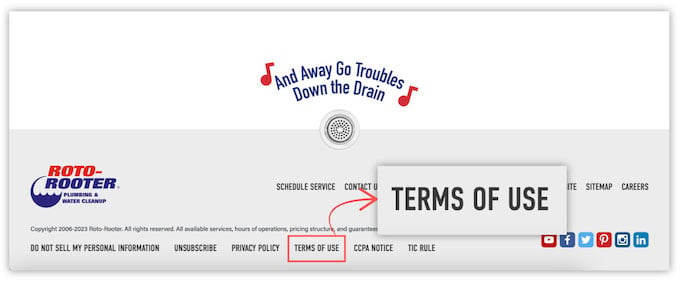
Terms and conditions don’t just set expectations for you and for your users, but they also serve to protect both parties from abuses. They are used to:
Your terms and conditions outline the rules of engagement, while your privacy policy discloses how you collect, store, and distribute user data. While there is overlap, a simple way to think about it is that terms and conditions protect you while privacy policy protects users.
SMS terms and conditions are the particular set of rules and guidelines that apply to your SMS (short message service) or texting campaigns.
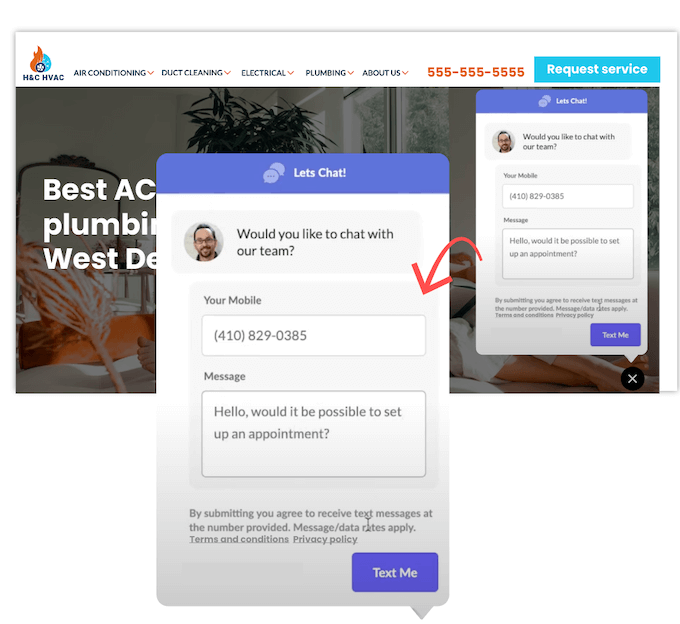
Major mobile carriers now require that all 10-digit long code numbers be registered with The Campaign Registry (learn all about 10DLC registration here).
In order to get registered, your business must meet TCPA rules and regulations, one of which being that you must obtain express prior written consent before texting someone.
See our guide to prior express written consent here.
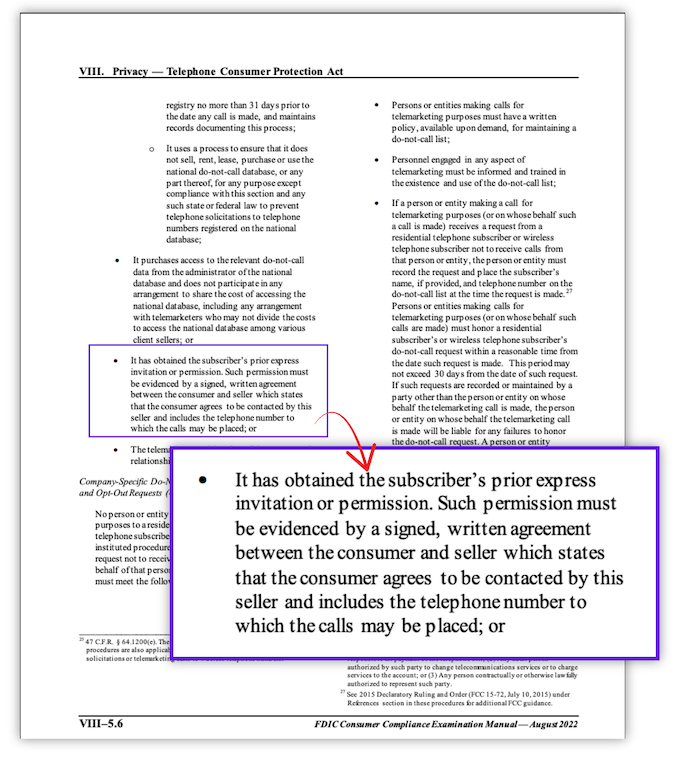
And in order to obtain consent, you need to have SMS terms and conditions to consent to.
This means that if you are a business that texts your contacts, whether for lead outreach, sales follow-up, to share promotions, or something else, you need:
Also, the TCPA is federal law, so you need to take it seriously, otherwise, you can face consequences like:
RELATED:
The full list of what to include in your terms and conditions will depend on your business type, legal counsel, products and services, and more. However, you can start with the minimum requirements as per Twilio*:
*You’ll notice that this page covers terms and conditions requirements for shortcode numbers, but the same standards apply for 10DLC.
Use the below SMS terms and conditions template as a starting point for your own.
DISCLAIMER: The below template is for your SMS terms and conditions, not for your entire website terms and conditions. It also covers only the minimum requirements, and may not include everything required for your business, industry, use case, etc. This is also not legal advice. You should consult with your legal counsel to ensure that your terms of service and privacy policy are compliant with applicable law and consistent with standards for your particular campaign and industry.
[Company name] SMS Terms & Conditions
You don’t have to format it this way, but it does make things clear for the consumer and helps you to ensure you’ve hit all your key points.
Here’s a more fleshed-out sample SMS terms and conditions for a home services company, using the template above:
ABC Roofing SMS Terms & Conditions
1. Program description: When opted-in, you will receive text messages (SMS/MMS) to your mobile number. These kinds of messages may include a response to an inquiry, real-time texts to ask and answer questions about our services and pricing, and appointment confirmations.
2. Program frequency: Message frequency will vary depending on the conversation.
3. Opt out: You can opt-out of this service at any time. Just text “STOP” to the phone number. After you text “STOP” to us, we will send you an SMS reply to confirm that you have been unsubscribed. After this, you will no longer receive SMS messages from us. If you want to join again, just sign up as you did the first time or text “START,” and we will start sending SMS messages to you again.
4. Help: If you are experiencing any issues, you can reply with the keyword HELP. Or, you can get help directly from us at [link to your contact page on your website].
5. Interruption: Carriers, such as AT&T, are not liable for delayed or undelivered messages.
6. Costs: Message and data rates may apply for any messages sent to you from us and to us from you. If you have any questions about your text plan or data plan, please contact your wireless provider.
7. Privacy: If you have any questions regarding privacy, please read our privacy policy [link to privacy policy].
Below are examples of terms and conditions pages that home services businesses have created, specific to SMS. We have provided them to help you understand and visualize what your site needs.
DISCLAIMER: The examples below are not legal advice—from Hatch or the company in the example. Please use them only for informational purposes and as a starting point for your own terms and conditions, and get it approved by your legal counsel.
Universal Air & Heat’s SMS/MMS opt-in Terms, Conditions and Policy is in simple paragraph form:
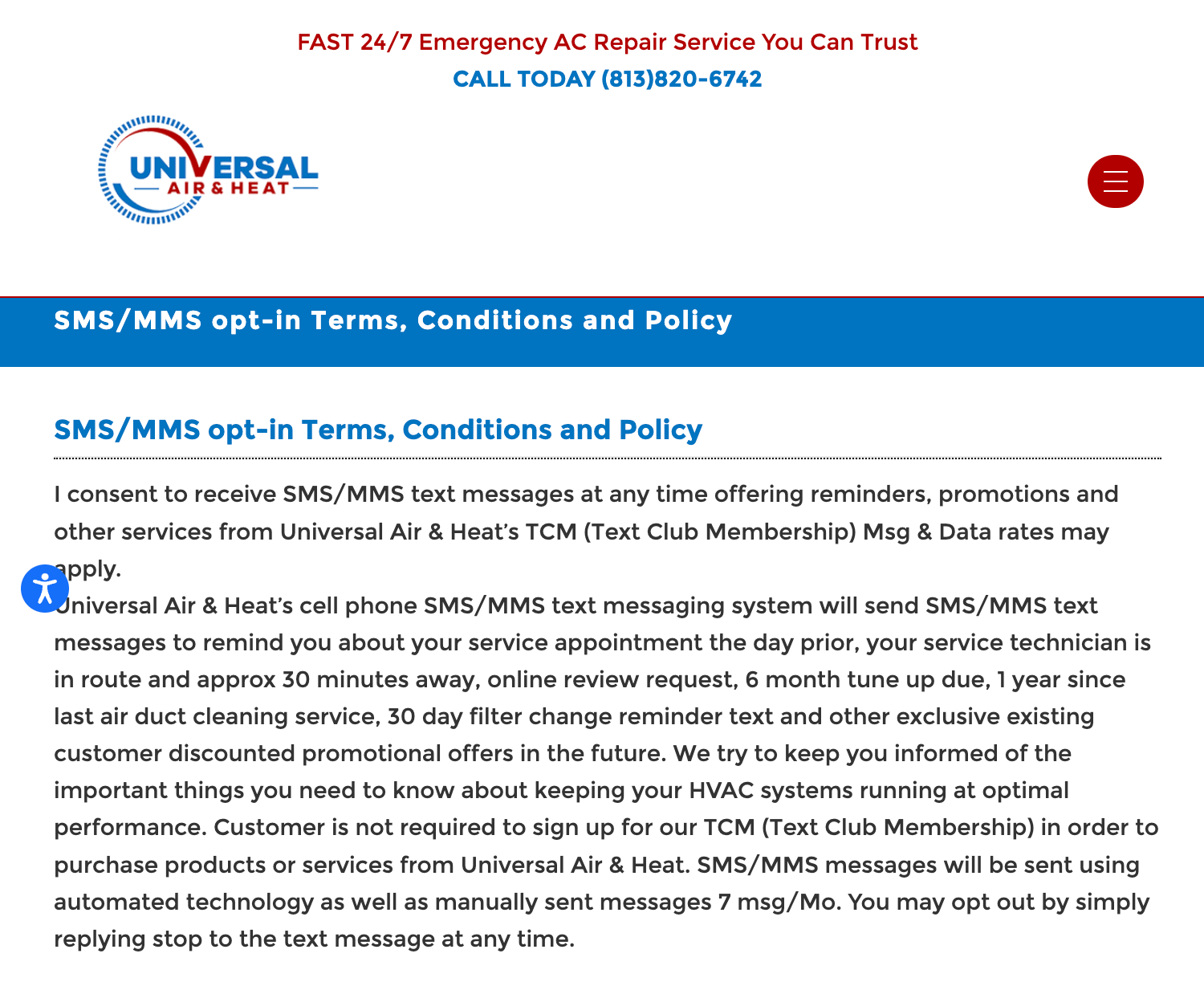
Note this is only a sample of the full document.
Maven Aircare’s SMS Terms & Conditions are organized by headers and contain an introduction as well as effective date and last updated date.
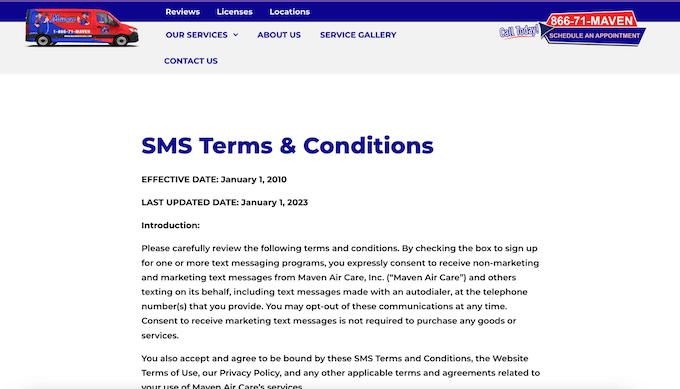
Note this is only a sample of the full document.
Bredahl Plumbing’s Mobile Messaging Terms & Conditions clarify the service used for SMS first, then outlines its terms of use in a similar format to the template we provided.
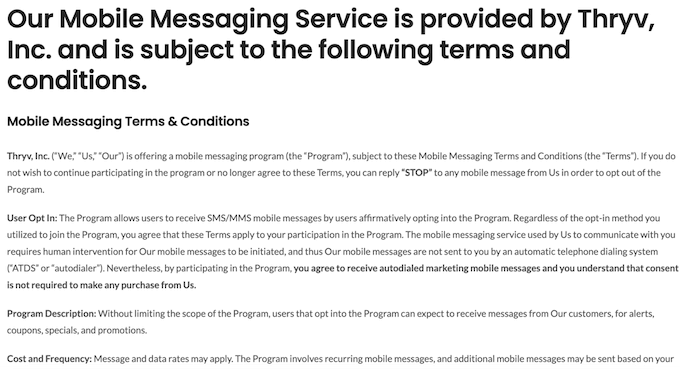
Note this is only a sample of the full document.
Similar to the first example, FirstEnergy Corp’s Mobile Tools and Text Messaging Disclaimer is simple paragraph form.
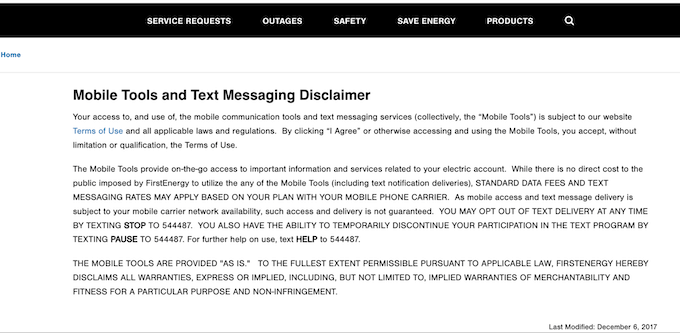
Note this is only a sample of the full document.
Below are examples of overall website terms and conditions pages that contain a section specific to SMS.
Owens Corning's SMS Text Messaging section on their website terms and conditions is in paragraph form, with a large section dedicated to supported carriers:
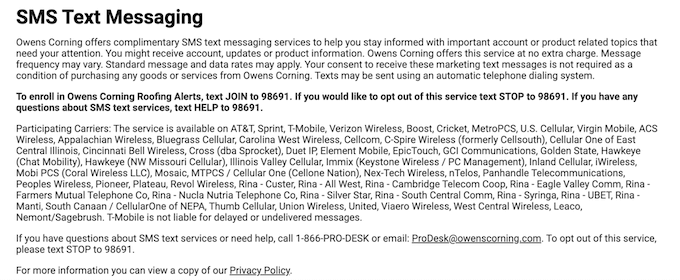
Note this is only a sample of the full document.
Roofing Direct’s Mobile Terms of Service are in paragraph form and include an updated date:
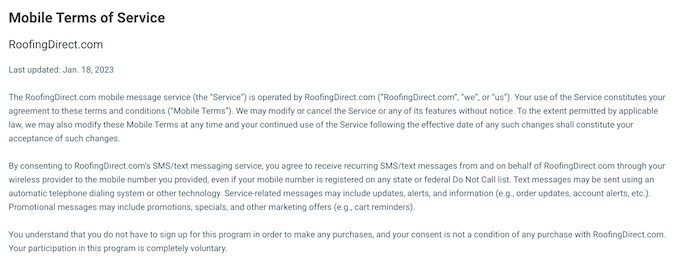
Note this is only a sample of the full document.
Writing your website and SMS terms and conditions can be a pain, but at the end of the day, these rules and guidelines are in place to ensure texting continues to be an effective means of communication for businesses and customers.
More importantly, business text messaging rules and regulations are ramping up, and taking care of the details now will help you to avoid serious consequences.
From Hatch
From the FCC (Federal Communications Commission)
From the CTIA (Cellular Telecommunications and Internet Association)
From The Campaign Registry (the third party that registers 10DLC numbers)
Stop letting your prospects slip through the cracks. Check out this list of 10 text templates you can use to follow up with leads (and get them to...
Learn exactly what prior express written consent means and use our SMS consent templates and examples so you can comply with the TCPA for business...
Learn about the new FCC ruling on TCPA compliance, its impact on lead generation, and strategies to ensure adherence and enhance consumer engagement.
Be the first to know about new sales and marketing insights to grow your messaging strategy with leads and customers.